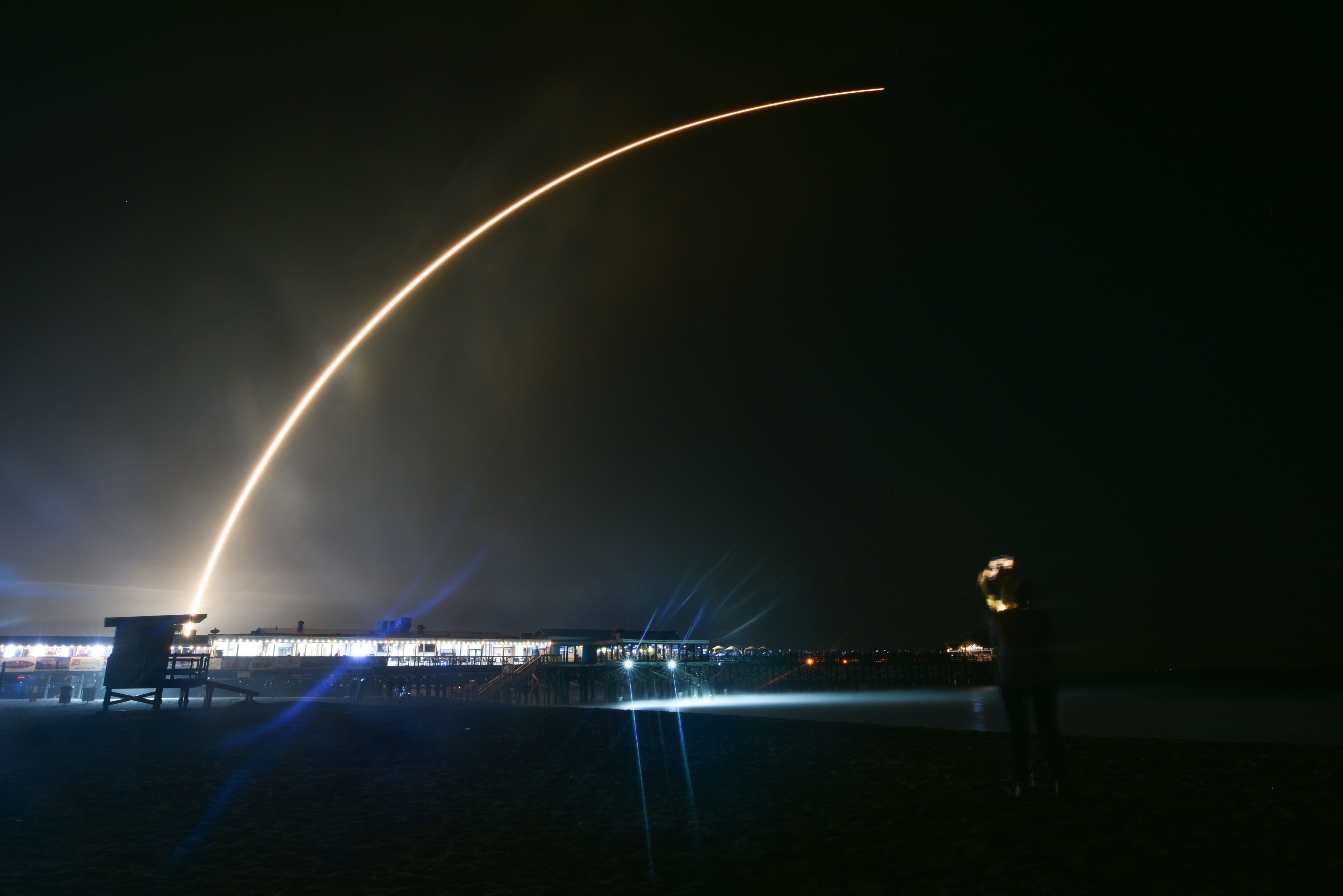WASHINGTON — A decade ago, the major launch pads at Cape Canaveral Space Force Station and Kennedy Space Center in Florida were flying just three or four missions annually. Now, after a record 31 launches in 2021, they are expecting to host 67 this year, or almost one every five days.
“It’s fascinating because when I give the number out, people just don’t believe it — especially old-timers,” says Brig. Gen. Stephen Purdy, the Space Force’s program executive officer for assured access to space and commander of Space Launch Delta 45, which is responsible for the Eastern Range, where Kennedy and Cape Canaveral are located.
Not only has the number of launches ballooned, but so have the providers. Purdy told C4ISRNET in an April 4 interview that while the service would traditionally onboard one new launch vehicle every decade, it expects to bring on seven new rockets this year alone. By his estimates, if all of those companies hit their targets, the Eastern Range could be supporting an annual launch rate of around 300 missions within several years.
The Space Force’s West Coast launch hub at Vandenberg Space Force Base in California is seeing more modest growth, with Purdy projecting its manifest to increase from about five or six launches annually to as many as 50 in the coming years.
This explosion of range activity is requiring Purdy and his team to rethink the way they manage the launch enterprise, adopting automated safety systems, implementing new processes for scheduling launches and considering legislative proposals that could allow the Space Force to operate its launch ranges like airports.
Purdy said the service has made progress over the last year in designing a roadmap for those changes, using a 2019 initiative called “Range of the Future” as its foundation. The effort was designed to implement strategic changes at the Space Force’s ranges in four primary areas: architecture, infrastructure, policy, operations. The service recently added a fifth focus on transforming its business model.
“I would say over the last year, we really matured in actually articulating these things and moving the ball forward,” Purdy said.
Chief of Space Operations Gen. John Raymond told the House Armed Services Committee during an April 27 budget hearing the service is on track to submit a congressionally mandated report on the initiative in the next month that will include proposed legislative changes and long-term infrastructure needs.
One of the Space Force’s more high-profile Range of the Future initiatives, and an area where it’s making some headway, is flight safety. The service has a requirement that all launch providers integrate a new Automated Flight Safety System by 2025. AFSS uses an internal navigation system to track a rocket’s path during launch and, if necessary, self-destruct. Because it’s automated, it relies on fewer ground-based radars and personnel, allowing the range to streamline its launch support.
To date, two companies — SpaceX and Vox Space — have transitioned to AFSS.
Another major effort, Purdy said, is developing a pathway for ranges to operate more like airports — or in this case, spaceports. That means shifting to a mindset where launch pads are like airport terminals, launch vehicle companies are airlines with paying customers and the ranges and the military bases that operate them are like airports providing a suite of services that companies can draw from based on their needs.
Moving toward this model, Purdy said, will take some time and will require major help from Congress. For example, within the spaceport construct, the service would charge companies for things like utilities and use those funds to reinvest in infrastructure. However, that’s not allowed under current law.
“We can accept funds in a direct capacity,” Purdy said. “What we can’t do is charge them any kind of overhead. We can’t charge them like we are a port or an airport authority. And so, we want to be able to get to that point.”
The service is fleshing out some of those legislative hurdles as part of its Range of the Future report and has started early work with the Federal Aviation Administration on a national spaceport strategy that will further examine those needs, Purdy said.
“It’s a tough ask because it’s something that’s kind of new in our world,” he said. “But it is sort of like a final big domino to be able to cross that threshold into port authority concepts.”
Space Force leaders say Congress has been receptive to these proposals and to the Range of the Future effort more broadly. Lt. Gen. Michael Guetlein, head of Space Systems Command, said during an April 20 C4ISRNET Conference the service is “working very closely with the Hill to achieve that vision.”
Courtney Albon is C4ISRNET’s space and emerging technology reporter. She has covered the U.S. military since 2012, with a focus on the Air Force and Space Force. She has reported on some of the Defense Department’s most significant acquisition, budget and policy challenges.








